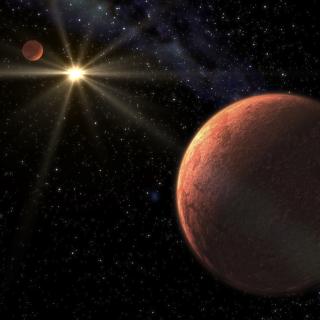Bibcode
Zhang, Z. H.; Pinfield, D. J.; Gálvez-Ortiz, M. C.; Burningham, B.; Lodieu, N.; Marocco, F.; Burgasser, A. J.; Day-Jones, A. C.; Allard, F.; Jones, H. R. A.; Homeier, D.; Gomes, J.; Smart, R. L.
Referencia bibliográfica
Monthly Notices of the Royal Astronomical Society, Volume 464, Issue 3, p.3040-3059
Fecha de publicación:
1
2017
Número de citas
69
Número de citas referidas
59
Descripción
We have conducted a search for L subdwarf candidates within the
photometric catalogues of the UKIRT Infrared Deep Sky Survey and Sloan
Digital Sky Survey. Six of our candidates are confirmed as L subdwarfs
spectroscopically at optical and/or near-infrared wavelengths. We also
present new optical spectra of three previously known L subdwarfs (WISEA
J001450.17-083823.4, 2MASS J00412179+3547133, and ULAS
J124425.75+102439.3). We examined the spectral type and metallicity
classification of subclasses of known L subdwarfs. We summarized the
spectroscopic properties of L subdwarfs with different spectral types
and subclasses. We classify these new L subdwarfs by comparing their
spectra to known L subdwarfs and L dwarf standards. We estimate
temperatures and metallicities of 22 late-type M and L subdwarfs by
comparing their spectra to BT-Settl models. We find that L subdwarfs
have temperatures between 1500 and 2700 K, which are higher than
similar-typed L dwarfs by around 100-400 K depending on different
subclasses and subtypes. We constrained the metallicity ranges of
subclasses of M, L, and T subdwarfs. We also discussed the spectral-type
and absolute magnitude relationships for L and T subdwarfs.
Proyectos relacionados

Estrellas de Baja Masa, Enanas Marrones y Planetas
Se investigan los procesos que conducen a la formación de estrellas de baja masa, enanas marrones y exoplanetas y caracterizar las propiedades físicas de estos astros en varias etapas evolutivas. Las estrellas de muy baja masa y las enanas marrones son probablemente los objetos más numerosos de nuestra Galaxia, pero no por ello están
Rafael
Rebolo López

Exoplanetas y Astrobiología
La búsqueda de vida en el Universo se ha visto impulsada por los recientes descubrimientos de planetas alrededor de otras estrellas (los llamados exoplanetas), convirtiéndose en uno de los campos más activos dentro de la Astrofísica moderna. En los últimos años los descubrimientos cada vez más numerosos de nuevos exoplanetas y los últimos avances
Enric
Pallé Bago